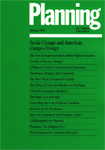- Integrated Planning
Integrated Planning
Integrated planning is a sustainable approach to planning that builds relationships, aligns the organization, and emphasizes preparedness for change.
- Topics
Topics
- Resources
Resources
Featured Formats
Popular Topics
- Events & Programs
Events & Programs
Upcoming Events
- Building Buy-in for Planning: Dealing With Resistance and Gaining Support
Online | March 11 – April 8 - Budgeting for Impact: A Working Group on Resource Planning in Higher Education
Online | Feb 5, Feb 19, March 5 - Cross-Functional Collaboration: Tools and Skills for Working Across Silos
Online | February 10, 17, 24
- Building Buy-in for Planning: Dealing With Resistance and Gaining Support
- Community
Community
The SCUP community opens a whole world of integrated planning resources, connections, and expertise.
- Integrated Planning
Integrated Planning
Integrated planning is a sustainable approach to planning that builds relationships, aligns the organization, and emphasizes preparedness for change.
- Topics
Topics
- Resources
Resources
Featured Formats
Popular Topics
- Events & Programs
Events & Programs
Upcoming Events
- Building Buy-in for Planning: Dealing With Resistance and Gaining Support
Online | March 11 – April 8 - Budgeting for Impact: A Working Group on Resource Planning in Higher Education
Online | Feb 5, Feb 19, March 5 - Cross-Functional Collaboration: Tools and Skills for Working Across Silos
Online | February 10, 17, 24
- Building Buy-in for Planning: Dealing With Resistance and Gaining Support
- Community
Community
The SCUP community opens a whole world of integrated planning resources, connections, and expertise.
 Planning for Higher Education Journal
Planning for Higher Education JournalA Planner’s Guide to Tomorrow’s Classrooms
 From Volume 22 Number 3 | Spring 1994By Anthony Blackett, Brenda Stanfield
From Volume 22 Number 3 | Spring 1994By Anthony Blackett, Brenda StanfieldTeaching in colleges and universities is going through a revolution brought on by changes in the student-teacher relationship, the volume of new sources of information and knowledge, and new electronic technology. All have implications for facilities planning. Three principles should be kept in mind when planning instructional space. First, "plan for the full range of teaching modalities." All classrooms need not be high-tech. Second, "plan for change and flexiblity." Technology changes rapidly. Third, "focus on the exchange of ideas and the acquisition of knowledge," not the latest technology." There are also six variables to keep in mind in teaching facilities design. These include "the different delivery modes of education material, the size of the class to which the material is delivered, lecture/video or discussion/interactive format, form of computer instruction, self-paced learning modalities, discipline-specific laboratories or classrooms." It is also helpful to consider two categories of classrooms: larger, fixed design spaces and smaller, flexible design spaces. Fixed-design rooms include conventional large lecture halls, tiered classrooms, and camera-equipped classrooms. It is most important to determine the appropriate mix and arrangement before beginning any classroom modernization program. In this way, focus can remain on the teaching, not the hardware.
MEMBERS ONLY
Attention Members: Log in to access this item.Not a member? Join now to access this article and all journal articles for free. - Topics
- Topics


